Silk Road in Iran | Iran's Historic Silk Road Heritage
The Silk Road, an ancient network of trade routes, holds profound historical importance.
Originating during China's Han Dynasty around 130 BC, it served as a vital corridor connecting the Far East with Europe and the Middle East. This intricate web of routes facilitated the exchange of goods, cultures, ideas, and technologies across vast distances. It earned its name from the prized commodity of silk, but its significance extended far beyond this luxurious fabric. The Silk Road fostered trade in spices, ceramics, precious metals, and innovations like papermaking and gunpowder, transforming societies and shaping civilizations along its path.
Iran stands as a pivotal country along the Silk Road, serving as a crossroads for diverse cultures, merchants, and travelers. Positioned strategically at the crossroads of East and West, Silk Road in Iran was a nexus for trade, cultural exchange, and intellectual discourse. Its cities, such as Ray, Isfahan, Shiraz, and Persepolis, were vibrant centers along this historic route, witnessing the flow of goods and ideas that left an indelible mark on Iran's rich heritage. Iran's contribution to silk production and its quality earned admiration, with even the queen of China choosing Iranian silk for her regal attire. The legacy of Silk Road in Iran resonates through its landmarks, architectural marvels, and the enduring influence on the country's art, crafts, and traditions.
The Silk Road through History
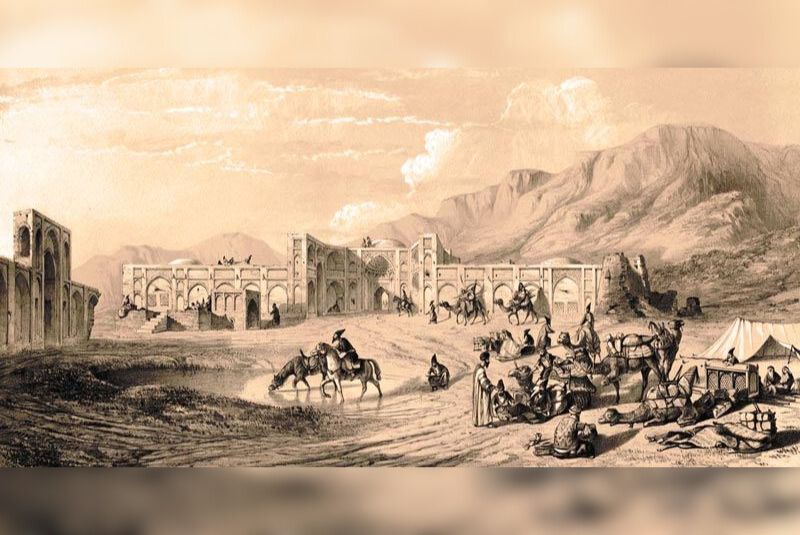
The Silk Road, a historic network of trade routes, holds a profound significance in connecting the world's diverse cultures and economies. Originating during the Han Dynasty in China around 130 BC, this intricate web of routes stretched across continents, linking the Far East to the Mediterranean. Its routes were not merely for the exchange of goods; they served as conduits for the exchange of ideas, cultures, and technologies, fostering a legacy that transcended borders.
In Iran, the Silk Road played a pivotal role during various dynasties. Under the Parthians, trade flourished between China and Iran, marked by the exchange of goods like silk, spices, and precious stones. The Sassanian Empire's reign saw significant economic growth through the Silk Road, with Iran serving as a bustling hub for trade between East and West.
The road's significance continued during the Islamic Golden Age, under the Abbasid and Seljuk periods, fostering cultural exchanges between Iran, Central Asia, and beyond. Caravanserais and bustling marketplaces dotted the Iranian landscape, testament to the thriving trade that traversed the country.
Later, during the Mongol Empire, the Silk Road fell under their control, with the famous Venetian merchant, Marco Polo, traversing its paths. The Timurid and Safavid periods also saw the Silk Road's influence, although its prominence began waning due to changing trade dynamics and emerging sea routes.
Despite fluctuations in its importance over time, the Silk Road in Iran remained a symbol of cultural diversity, economic prosperity, and historical legacy. Its history intertwined with the rise and fall of dynasties, leaving an indelible mark on Iran's heritage and identity. Today, remnants of this historic route continue to stand as silent witnesses to an era of remarkable trade, cultural exchange, and shared human history.
The Historical Significance of Silk Road in Iran
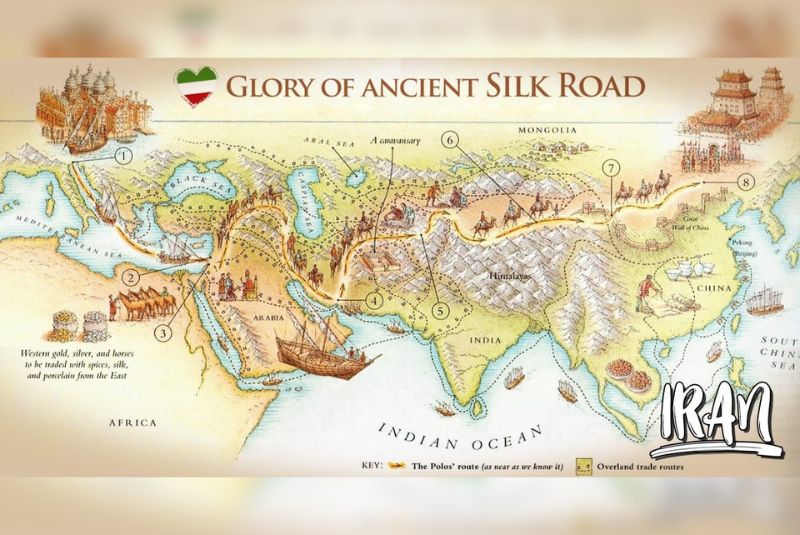
Iran's Pivotal Position on the Silk Road
Iran's geographical location played a pivotal role in the grand tapestry of the Silk Road, rendering it an essential hub for trade, cultural exchange, and diplomatic relations between the East and West. Situated at the crossroads of various civilizations, Iran served as a vital link connecting the Far East to Europe and the Mediterranean. The map of Silk Road in Iran depicted a sprawling network of routes, intertwining across diverse landscapes, from the Caspian Sea in the north to the Persian Gulf in the south, spanning deserts, mountains, and fertile plains.
Iran as a Cultural Crossroads
Iran emerged as a vibrant cultural crossroads along the Silk Road, fostering the interchange of goods, ideas, philosophies, and technologies. This ancient trade route traversed through cities and regions in Iran, creating a melting pot of cultures and influencing artistic expressions, architectural styles, and societal norms. The Silk Road in Iran wasn't merely a conduit for commerce; it served as a crucible for diverse traditions to amalgamate, resulting in a rich and diverse cultural heritage.
Key Cities and Regions along the Silk Road in Iran
The Silk Road cities in Iran formed crucial nodes along this historic trade route. Cities such as Ray, Isfahan, Shiraz, and Kerman emerged as bustling centers of commerce, intellectual exchange, and cultural convergence. Ray, an ancient city near Tehran, thrived as a trade hub and a center for craftsmanship. Isfahan, renowned for its stunning architecture and vibrant bazaars, attracted merchants and travelers alike, leaving an indelible mark on the Silk Road's narrative. Shiraz, known for its poetry, gardens, and trade, embodied the cosmopolitan essence of the Silk Road. Kerman, nestled amidst the desert, was a strategic oasis facilitating trade caravans and cultural interactions.
The regions along the Silk Road in Iran weren't limited to urban centers; the path encompassed stunning landscapes and historical sites. From the lush Caspian Sea coast to the arid deserts of Yazd and Kerman, the route traversed diverse terrains, each contributing to Iran's multifaceted heritage. Along this journey, travelers encountered ancient caravanserais, trading posts, and architectural marvels, testaments to Iran's enduring connection to the Silk Road.
Silk Road Economic and Cultural Impact
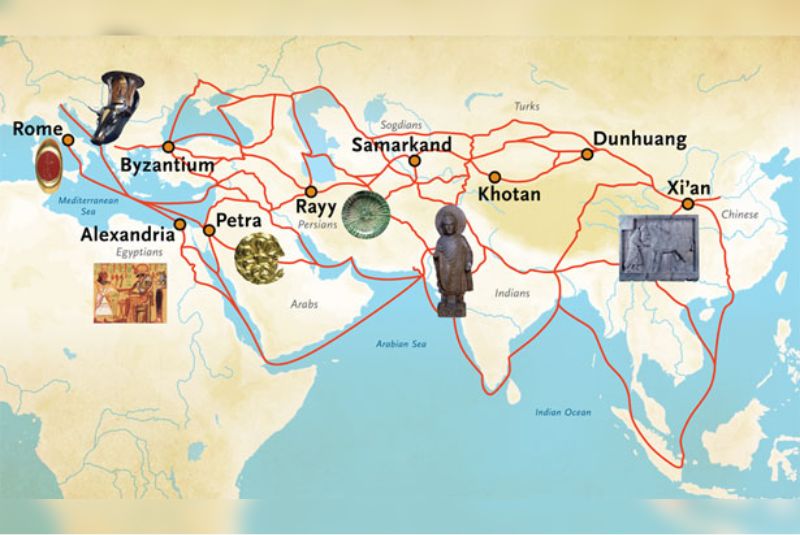
Economic Flourishing and Cultural Fusion
The Silk Road profoundly impacted Iran's economic landscape, fostering a thriving trade environment that transcended borders and continents. The exchange of commodities along the Silk Road was not solely about commercial transactions; it catalyzed cultural fusion, intellectual exchanges, and technological advancements. This ancient trade route facilitated the convergence of diverse cultures, religions, languages, and traditions in Iran, leaving an enduring imprint on the country's social fabric.
Exchange of Goods, Ideas, and Technologies
The Silk Road was more than a conduit for silk; it served as a conduit for the exchange of goods, ideas, and technological innovations. Iranian merchants engaged in trade along this route, exchanging silk, spices, ceramics, precious metals, and gems for goods like Chinese silks, Indian textiles, and Mediterranean products. Beyond material exchanges, the Silk Road facilitated the transmission of religious beliefs, philosophies, scientific knowledge, and artistic styles between East and West. Iran became a melting pot where diverse cultures intersected, nurturing a vibrant tapestry of traditions and customs.
Iran's Contribution to Silk Production
Iran's contribution to silk production along the Silk Road was significant. The quality of Iranian silk gained widespread acclaim, becoming highly sought after by merchants and elites across continents. The meticulous craftsmanship and expertise in sericulture ensured that Iranian silk was not just a commodity but a symbol of luxury and prestige. The queen of China herself admired and utilized Iranian silk for her garments, signifying the esteemed reputation of Iran's silk production. This craftsmanship was not just an economic asset; it was a cultural heritage that reflected Iran's artisanal prowess and contributed to the country's prominence along the Silk Road.
The Silk Road's economic and cultural influences on Iran were transformative, shaping the country's history, art, commerce, and societal values. Iran's role as a pivotal player along this ancient trade route showcased its capacity to thrive amidst cultural diversity, making significant contributions to the global exchange of knowledge and goods.
Landmarks and Cities along the Silk Road in Iran
Prominent Landmarks and Historical Sites
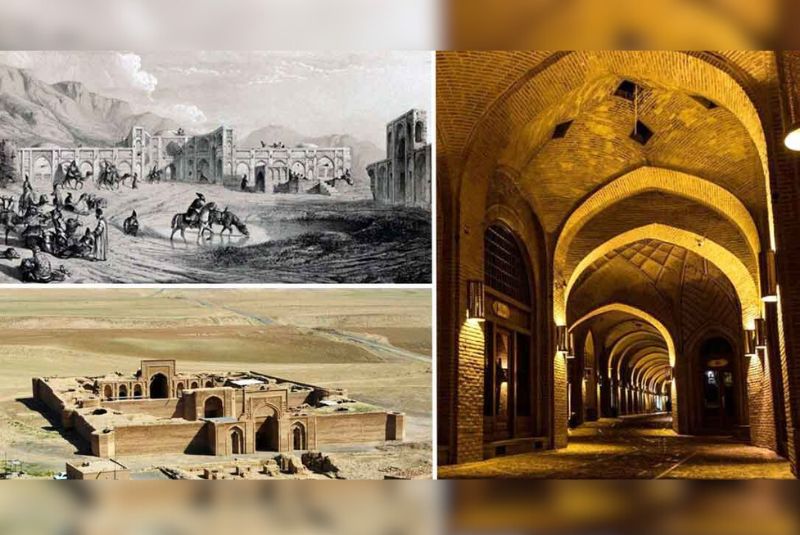
Iran's landscape is adorned with a plethora of prominent landmarks and historical sites, standing as testaments to its rich heritage along the Silk Road. Architectural marvels, ancient caravanserais, and UNESCO World Heritage Sites line the path of this ancient trade route, offering glimpses into Iran's illustrious past and cultural grandeur.
Architectural Wonders and Ancient Caravanserais
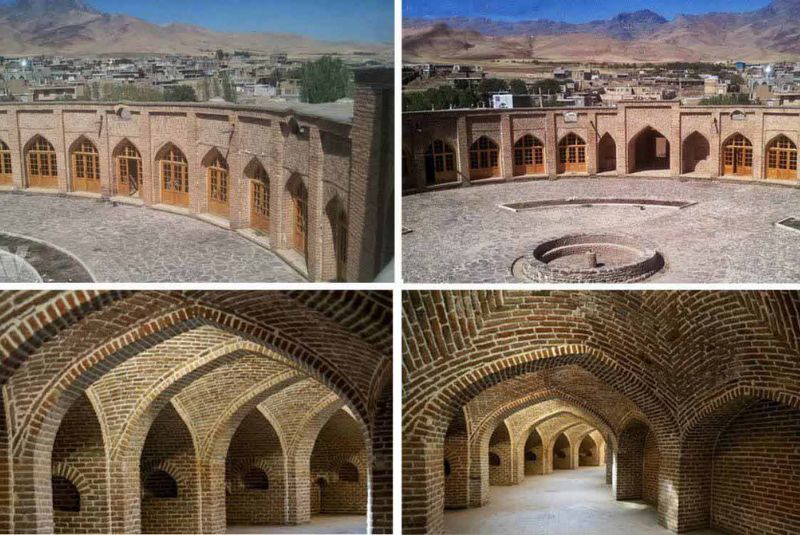
The Silk Road in Iran is adorned with architectural wonders, a fusion of artistic prowess and historical significance. Caravanserais, such as the Zein-o-din Caravanserai near Yazd, served as crucial waystations for traders and travelers. These ancient structures, with their intricate designs and strategic locations, provided respite and safety to merchants and their caravans, showcasing Iran's architectural ingenuity and hospitality to travelers along the Silk Road.
| Related: All Caravanserais on Silk Road - First Tourist Inns in the World
UNESCO World Heritage Sites
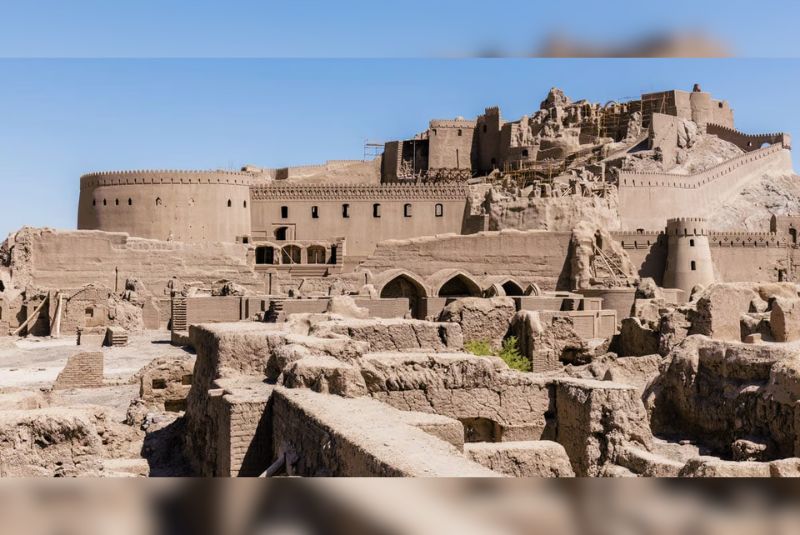
Iran boasts several UNESCO World Heritage Sites along the Silk Road, each bearing testimony to the country's cultural wealth. Persepolis, an ancient ceremonial capital of the Achaemenid Empire, stands as a symbol of grandeur and architectural finesse. Naqsh-e Rustam, with its rock reliefs and tombs, echoes tales of Persian history and royal legacy. These sites are windows into Iran's glorious past, displaying remarkable craftsmanship and historical narratives that continue to enthrall visitors.
Attractions like Persepolis and Naqsh-e Rustam
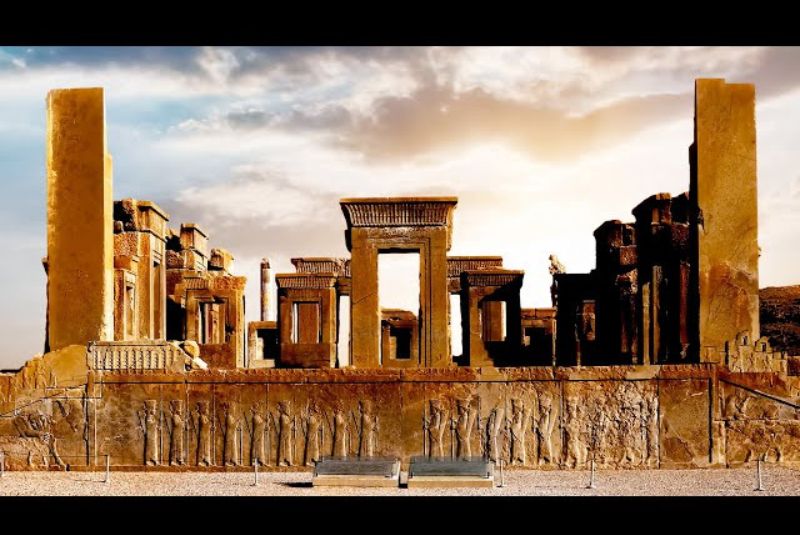
Persepolis, a UNESCO-listed marvel, unfolds the ancient Persian Empire's splendor. Its colossal columns, intricate reliefs, and majestic gateways narrate tales of bygone civilizations. Nearby, Naqsh-e Rustam, an ancient necropolis, houses rock-cut tombs of Persian kings and showcases artistic prowess etched into the mountainside.
Iran's landmarks and cities along the Silk Road stand as living testaments to the country's profound historical and cultural significance. Each site preserves a unique chapter of Iran's rich heritage, inviting visitors to delve into the grandeur of its past and witness the intricate tapestry woven by centuries of trade, cultural exchanges, and artistic endeavors along this ancient route.
Iran's Silk Road Legacy and Modern-day Influence
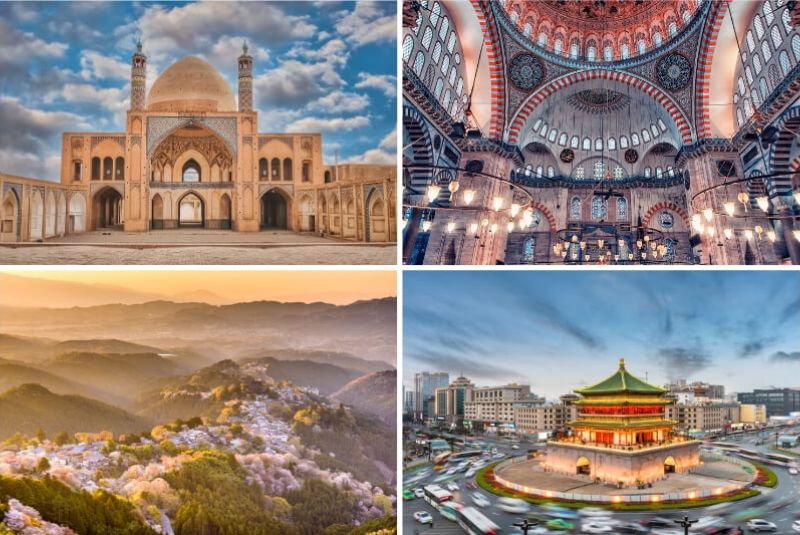
Lasting Legacy in Culture, Art, and Society
The Silk Road's legacy echoes through the heart of Iran's culture, art, and societal fabric. Centuries of cultural exchanges and trade have left an indelible mark, shaping Iran's identity and leaving a legacy that reverberates in its diverse traditions. The fusion of various cultural elements along this ancient route has contributed significantly to Iran's artistic expressions, culinary diversity, and societal ethos.
Continuation of Traditional Crafts and Art Forms
Iran proudly carries forth the legacy of traditional crafts and art forms nurtured along the Silk Road. Intricate carpet weaving, exquisite tilework, masterful miniature painting, and delicate pottery are just a few examples of the vibrant artistic heritage persevered through generations. These crafts embody Iran's artistic finesse and serve as living testaments to the skills passed down through centuries of cultural exchange.
Culinary Influences
The culinary influences of the Silk Road continue to tantalize taste buds in Iran. Spices, flavors, and cooking techniques introduced through trade have become integral to Iran's culinary landscape. Dishes like kebabs, pilafs, and flavorful stews showcase the amalgamation of diverse culinary traditions.

Finally!
Iran's pivotal role in the history of the Silk Road remains an enduring testament to its rich heritage and cultural significance. As a crossroads of civilizations, Iran has intricately woven its history with the ancient trade routes, offering a treasure trove of experiences for intrepid travelers.
Exploring the Silk Road in Iran unveils a captivating journey through time, where ancient caravanserais, UNESCO World Heritage Sites, and architectural marvels stand as witnesses to centuries of trade and cultural exchange. From the grandeur of Persepolis to the intricate beauty of traditional crafts, Iran's Silk Road heritage beckons travelers to immerse themselves in its vibrant cultural mosaic.
Share your story!
Comment below and let us know about your Experience.
Your story inspires others!


Comment
Leave a Comment